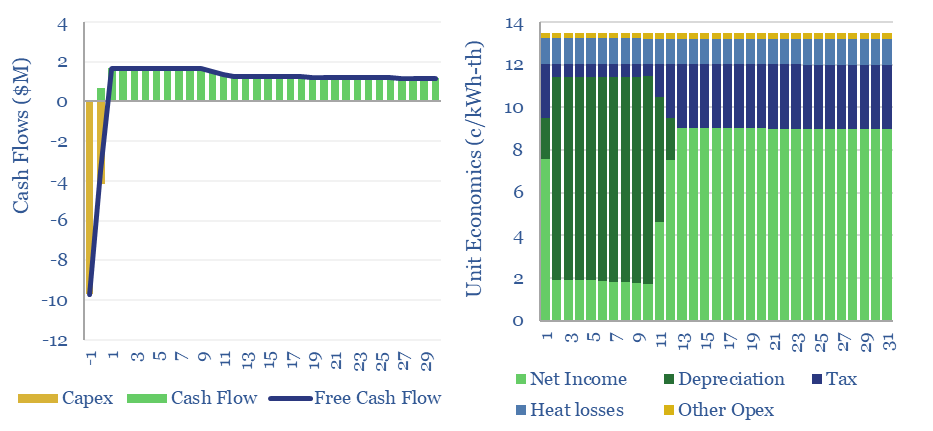This data-file captures the costs of thermal energy storage, buying renewable electricity, heating up a storage media, then releasing the heat for industrial, commercial or residential use. Our base case requires 13.5 c/kWh-th for a 10% IRR, however 5-10 c/kWh-th heat could be achieved with lower capex costs.
Thermal energy storage solutions aim to help integrate solar and wind into power grids, by absorbing excess generation that would otherwise be curtailed, and then re-releasing the heat later when renewables are not generating.
Different storage media are compared in one of the back-up tabs of the model. However, one-third of the companies in our thermal energy storage company screen are pursuing molten salt systems, hence our thermal energy storage model focuses on this option.
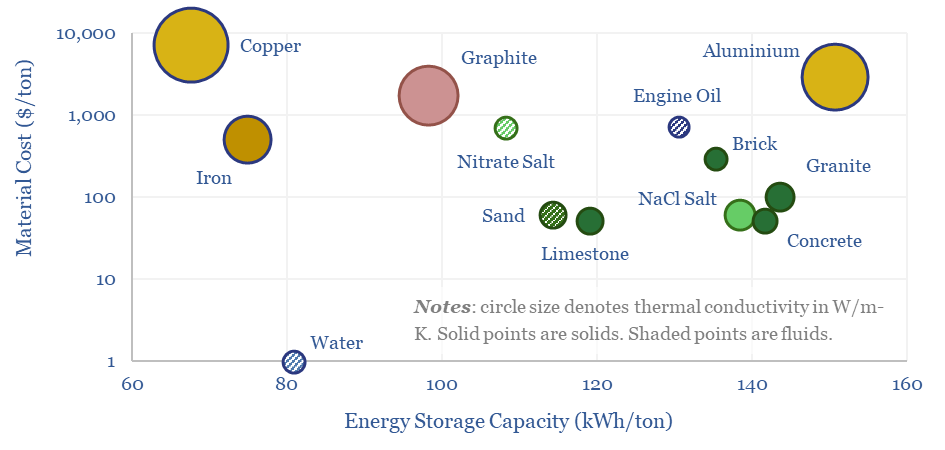
In our base case, the cost of thermal energy storage requires a storage spread of 13.5 c/kWh for a 10MW-scale molten salt system to achieve a 10% IRR, off of $350/kWh of capex costs. Costs are sensitive to capex, utilization rates, opex, electricity prices and round trip losses. The sensitivities can be stress tested in the data-file.
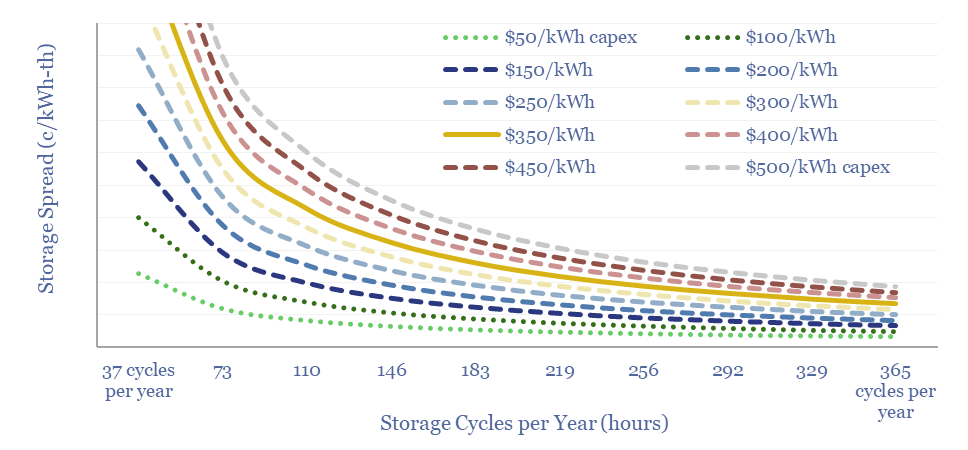
Capex costs of thermal energy storage may be reduced below our base case estimate, which has been built-up using the same input assumptions as our broader battery cost models. Larger systems require proportionately more storage material, larger tanks, and more insulation. But other lines in the capex build up do not change, and hence these costs deflate in MWH-terms.
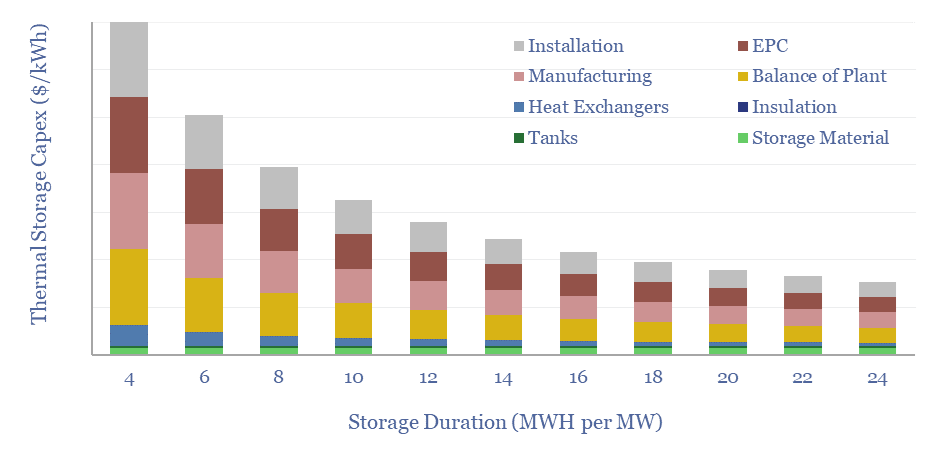
The round-trip efficiency of thermal energy systems can also be higher than we might have naively expected, possibly in the range of 85-95%. The physics is modeled from first principles in other back-up tabs of the data-file. As a generalization, a large and well-insulated thermal energy storage system loses 1-2% of its stored heat over the course of 24-hours.
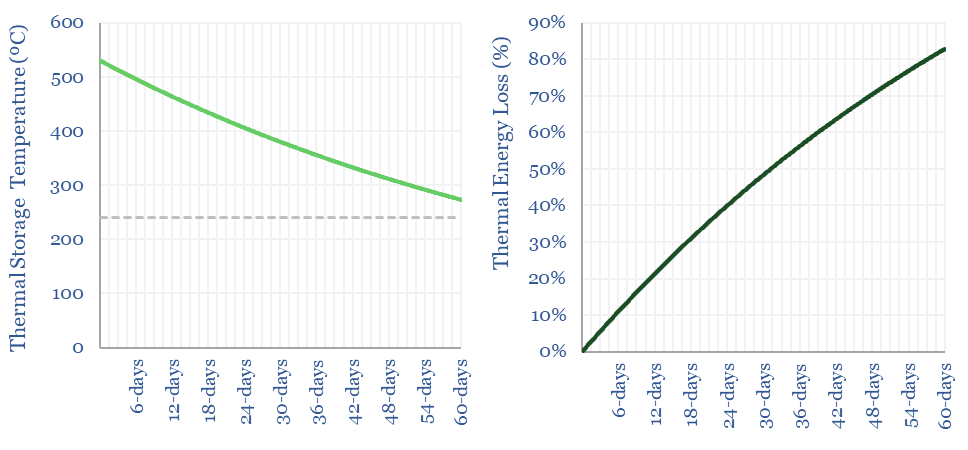
The full data-file contains the workings behind our recent deep-dive into thermal energy storage. We have also included similar estimates for residential-scale storage, adding an electrically heated hot water tank to absorb excess renewables, which looks simple and can be highly economical. Please download the data-file to stress test all of our numbers.

